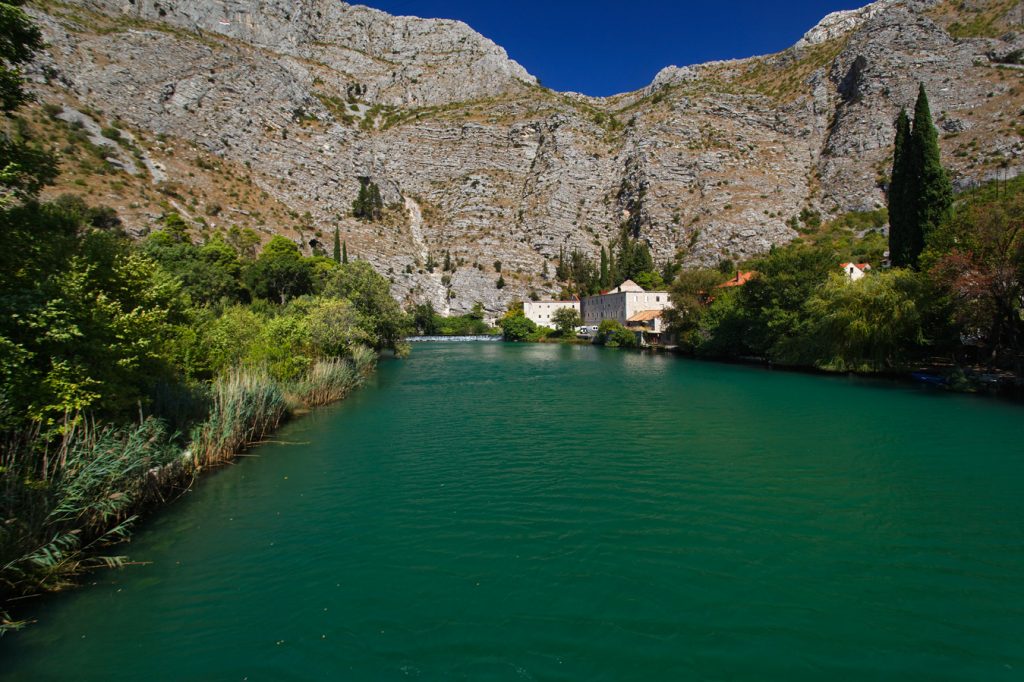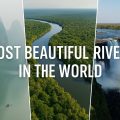Discover the Ombla River near Dubrovnik, Croatia — one of the shortest rivers on Earth. Learn how this tiny karstic wonder, just 30 meters long, plays a mighty role in supplying fresh water to the region.
We often find ourselves fascinated by extremes — the longest river, the widest, the deepest. But what about the shortest? When it comes to rivers, defining “small” isn’t always straightforward. Is it a question of length, width, or water discharge? The line between a river and a stream can be surprisingly blurry. Enter the Ombla River, a fascinating natural feature hiding in plain sight just outside the historic city of Dubrovnik, Croatia.
While Dubrovnik is world-renowned for its medieval walls and dazzling Adriatic coastline, the Ombla adds a lesser-known yet intriguing chapter to the story of the region’s geography.
The Ombla River is astonishingly short — only about 30 meters (98 feet) from its karstic spring to its mouth, where it flows into the Rijeka Dubrovačka, a picturesque ria (a drowned river valley) that opens into the Adriatic Sea. Despite its short length, the Ombla is far from insignificant. Its average discharge is 23.9 cubic meters per second, making it a true river by hydrological standards — not just a glorified stream.
Curious about the shortest and longest rivers in the world?
What sets Ombla apart is not just its length — or lack thereof — but its role in the region. Fed by underground karst systems, it serves as a major freshwater source for Dubrovnik, a lifeline concealed beneath the rugged limestone terrain of southern Dalmatia.
So next time you’re marveling at the grandeur of Dubrovnik’s stone ramparts or gazing out over the Adriatic, take a moment to appreciate one of the world’s tiniest, yet most powerful rivers — the mighty little Ombla.
But while the Ombla River may be short in surface length, what lies beneath is astonishing in scale and complexity.
Despite its tiny above-ground course, the Ombla’s drainage basin spans a massive area — estimated between 600 and 900 square kilometers (230 to 350 square miles). It stretches from the Adriatic coast near Dubrovnik all the way inland to Popovo Polje in Bosnia and Herzegovina. Unlike most rivers, Ombla’s basin consists almost entirely of groundwater, coursing through an intricate network of underground limestone channels and reservoirs typical of karst landscapes. The actual boundaries shift with the seasons, responding to rainfall and fluctuating hydrological conditions that influence subterranean flows.
At its source lies one of the most powerful karst springs in all of Croatia, gushing directly from a monolithic cliff face. Behind this dramatic wall of stone is Vilina špilja (Fairy Cave) — a hidden world of wonder. This cave system, part of the Vilina špilja-Ombla complex, is not only ecologically significant but biologically extraordinary.
With over 150 recorded taxa, including 23 species listed in Croatia’s Red Book of Cave Fauna, this is the richest known cave ecosystem in Croatia. The high level of endemism makes it a true jewel of the Dinaric karst. In fact, some researchers rank Vilina Cave among the top 7 caves in the world for its biological richness, a subterranean Eden still being explored.
So while Ombla might appear modest at first glance, it is in fact a giant hiding in plain sight — its true power, mystery, and grandeur flowing silently beneath our feet.
See other magnificent rivers in Croatia:


